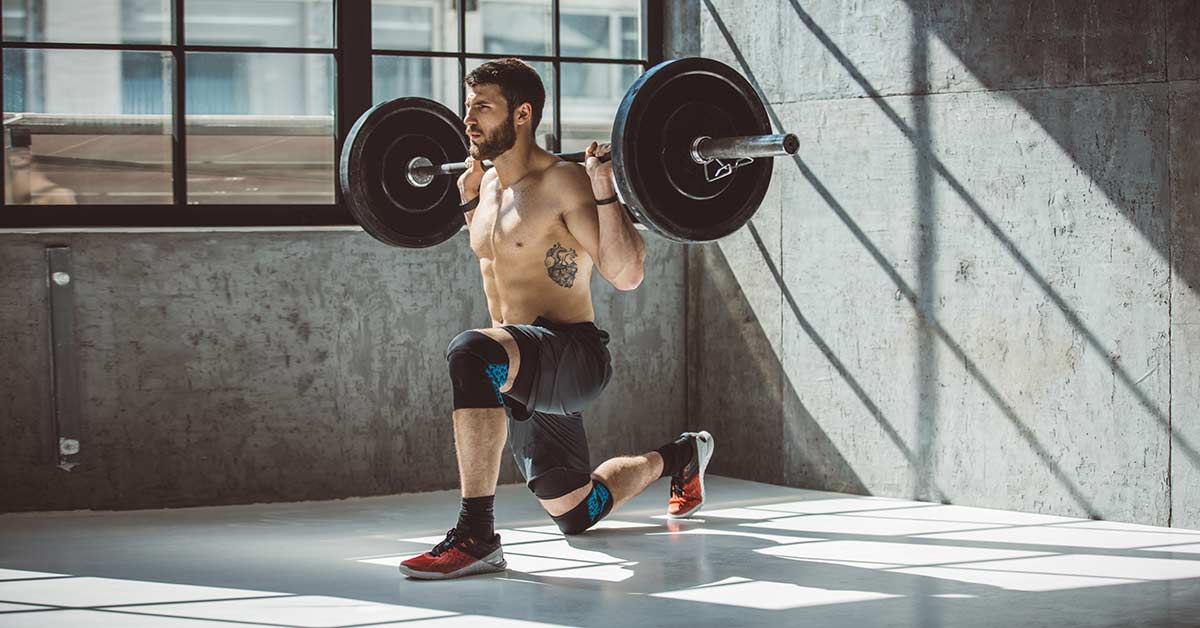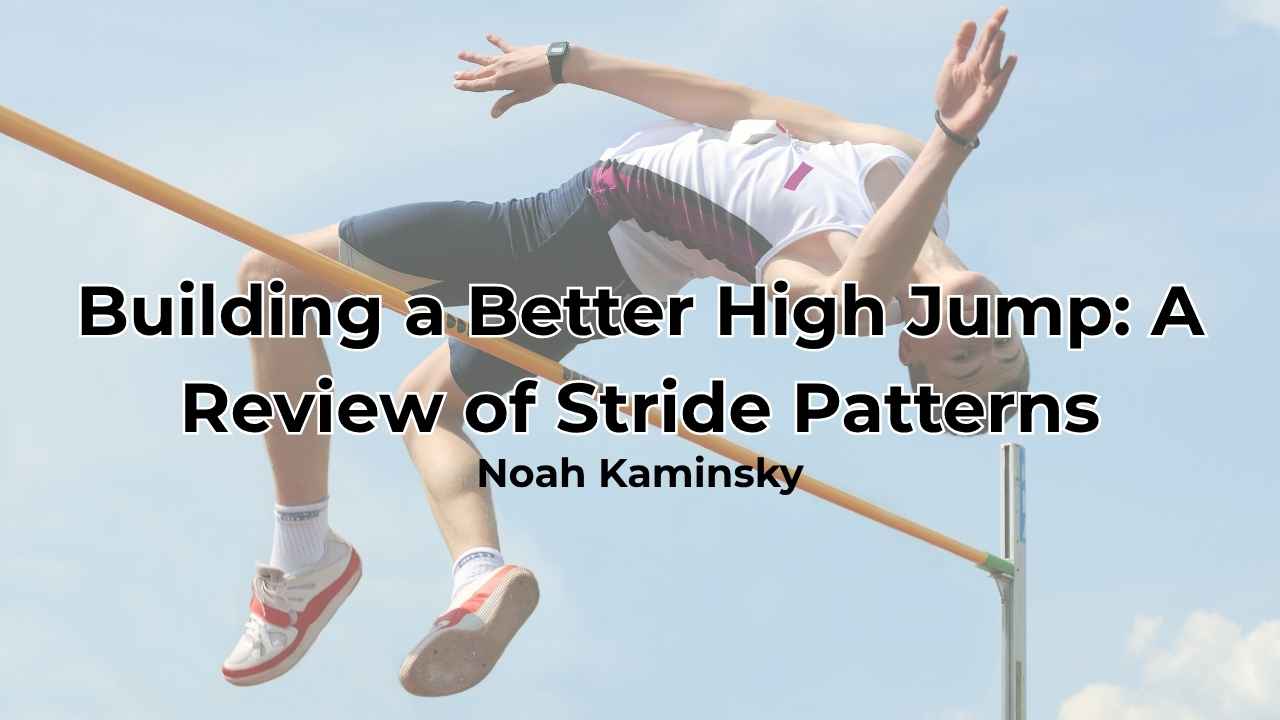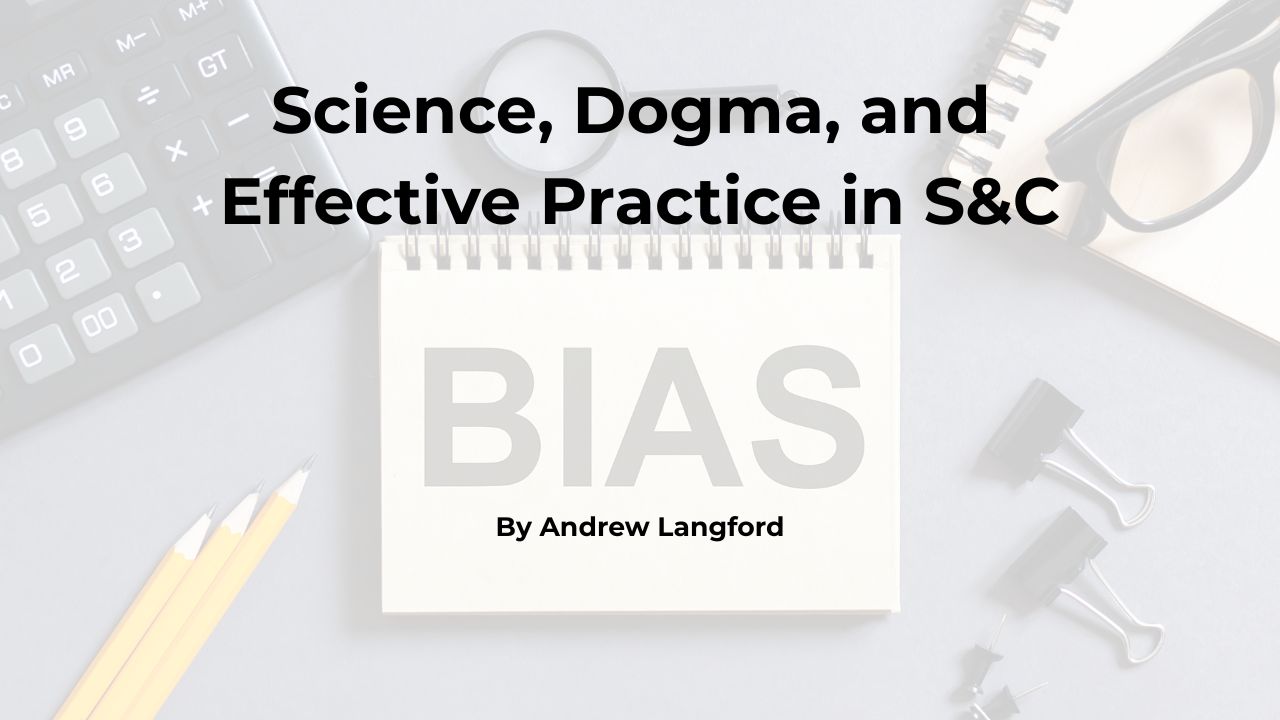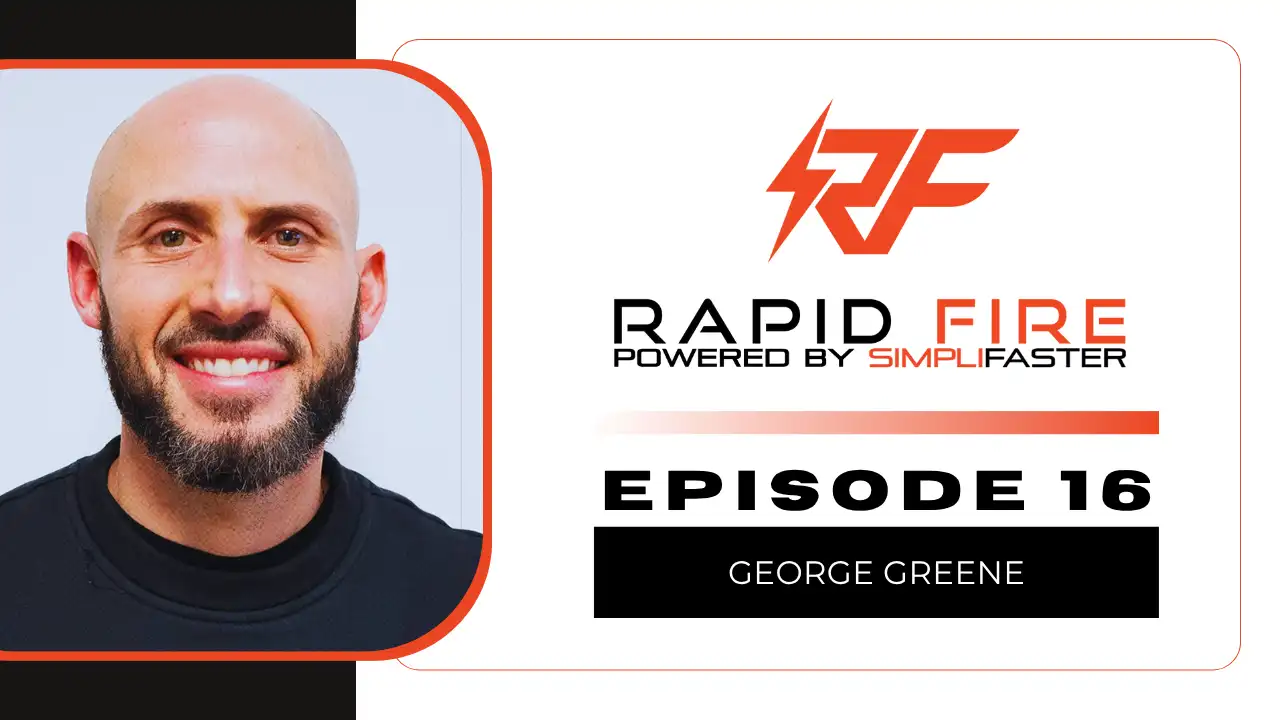[mashshare]
As I wrote about before in my somewhat controversial article on squat depth, there are different forms of exercises that may be more appropriate at different points of the year. We all agree that we need to increase specificity of movement as we get closer and closer to the season and this article presents the progression that I like for lunging movements.
Early in my career, I did not realize that there were variations in the performance of a lunge and, as such, I never saw a huge reason to emphasize them. I saw great improvements from squats, so I thought I should just stick with those as a bread-and-butter exercise year-round. My perspective was that everything related back to the squat and I should train my athletes as such.
As I have grown over the years and increased my knowledge, I have changed my perspective. Exercises elicit specific responses and each one is unique. Performance and the force vector of the load matter and they produce different reactions.
My Experience with Lunges and Biomechanics
As I learned the lunge early in my career, it seemed that the performance of the lunge was done as an initiation of gravity, a deceleration of the movement until the back knee was just above the ground, and a return of force to the starting position. After this, we would increase the complexity of performance of the lunge by having the athlete perform it in a walking manner. The initial portion of the movement is the same, but after the foot makes contact with the ground and the body is decelerated, the person then allows their momentum to go straight ahead and pulls themself through for the subsequent repetitions, rather than return back to the starting position. While these are two excellent exercises, I don’t necessarily feel like they’re the starting or ending point for a progression that could take us throughout the year.
By using planned progressions, we ensure that we perform these exercises as effectively as possible, say @jbryanmann. Share on XThe technique on these exercises, as with nearly any exercise, is absolutely crucial to ensuring that the athlete improves in their performance, decreases their risk of injury on the playing field, and reduces the risk of injury in the weight room. By going with planned progressions, we make sure we stay on track to do these in the most effective way possible.
The Lunge Progression I Use
This lunge progression has two separate portions. The first is about two different things: achieving the proper position and strengthening the muscles around the knee to be able to withstand the forces placed upon it by the latter portions of the progression, which are for transfer to sprinting and other sports-specific activities. The second portion is about propulsive forces that are applicable and transferrable to sprinting.
As a side note, it is important to talk about the mechanics of propulsion for sprinting. Examining the programs of many major universities, it appears that everyone wants to train the muscles of the knee as the major contributor to speed enhancement. When examining the biomechanics literature, it is apparent that placing a major emphasis on this is a lost cause—the main function of the knee extensor muscles is not propulsive at all; it is, in fact, all negative work1,3.
What this means for a coach is that the purpose of the knee extensor muscles is to absorb force and keep you upright, or in simpler terms—they keep you from falling on your face. Once you possess enough strength to prevent falling on your face, it may not be necessary to further increase the strength as it won’t enhance performance. What then is responsible for propulsive forces? This, of course, depends on the speed. Surprisingly (at least to me), below 7m/s, the prime group is the plantar flexors (gastrocnemius and soleus). Above 7m/s, the prime group is the hip extensors (gluteus maximus, biceps femoris long head, semitendinosus, and semimembranosus)3.
On to the lunge progression.
Step 1: Split Squat
I like using the split squat to see an athlete’s ability to achieve the bottom position of the lunge. I want to ensure that they don’t have a restriction of some sort (such as hip flexors that are too tight, ankle restriction, etc.) that would prevent them from reaching that position. After achieving that position with bodyweight and lighter weights, we’ll increase the load for two to four weeks.
[vimeo 280015074 w=800]
Video 1. Before lunging, split squats are great for teaching body positions and learning to apply force into the ground with the right mechanics. Split positions are natural progressions, and are common when teaching beginners and improving technique with advanced athletes.
Step 2: Split Squat with Six-Second Eccentric
I like to do this to ensure that athletes are ready to withstand loads that will have acceleration of gravity and forward momentum. As a result of this eccentric loading, tissues that may be restricted tend to increase in length at the sarcomere, giving us a little bit more range of motion. Both are handy to have as we progress throughout the training program. I like to stay here for two to four weeks.
Step 3: Lunges with Push Back to Starting Position
This is the lunge that I talked about initially with the description. I like to progressively overload this and stay with this variation for around four to eight weeks, until I stop seeing a fairly significant increase in load from session to session. I feel that I need to emphasize that on the return to the starting position, the athlete needs to maintain a vertical torso. Often, the athlete will shift their hips back and fold forward at the waist to initiate the movement. This can create excessive forces at the lumbar spine and cause the athlete to lose their balance and fall forward when there are any significant loads on the bar.
[vimeo 280015185 w=800]
Video 2. Popular options with lunges are the reverse styles that ensure athletes have great positioning before they learn to step forward. This video shows an example of lunging backwards, a staple with many coaches.
Step 4: Walking Lunges
This is the last of the lunges described initially. I like to stay with this and progressively overload it as well. It is nothing to see athletes doing lunges with 140kg+ on this movement after they have done it for any significant time, or if the athlete is returning to this movement after doing it heavy previously. Again, I like to progress this to where the athlete uses a heavy load with great technique. I like to progressively overload this and stay with this variation for around four to eight weeks, until I stop seeing a fairly significant increase in load from session to session.
[vimeo 280015278 w=800]
Video 3. Walking lunges are excellent for skilled trainees that have polished the earlier lunge progressions. Coaches can add countless small variations, but they must be purposeful and effective in execution.
For steps 5-7, I only do the initial, push-back type variation. For resistance, I primarily use various bands. Increasing the distance of the movement increases the intensity of the movement by increasing the band length and, thus, the tension. For the cable movements, while there isn’t a length-tension relationship to alter (to the same extent), the cable length is finite. Rather than risk breaking the apparatus, I simply do the push-back variations.
All of these lunges occur with the initiation of the movement from the hip and added forward propulsion from the ankle. These result in the back leg being straight as a consequence of the forceful hip extension and plantar flexion rather than as a goal. The leg in front is not the focus of the exercise as it was in the previous variations; it is simply to stop the force that you produced with the back leg.
Step 5: Hip-Dominated Lunge Initiation
I like to drop back to an unloaded bar or no more than a 40kg load and change the performance of the movement. From the standing position, when lunging forward with the right leg, the left hip and glute, quickly followed by the calf, should forcefully drive the athlete forward. This means the hip moves before anything else in the body, and that makes it appear that the head is thrown back. The goal is to drive the center of mass forward and, depending on the wording, this sometimes clicks with the athlete (hips lead, belly button leads, etc.).
This is often a tough concept for the athletes to grasp, and should be taught with a lot of coaching until they get it. I feel it’s easier to watch this and hear it rather than read it and understand it.
The hip-dominated lunge can be tough for athletes to grasp—they need to see it and be taught it, says @jbryanmann. Share on XI remember that when I read Dr. Yessis’ work, I thought this was a regular lunge. Upon visiting him, I saw that I was greatly mistaken about its performance. Whether it was youthful arrogance and overconfidence or difficulty in written expression, I’m uncertain. Whatever the reason, I didn’t get it down, so I think it’s best illustrated with the videos provided. I like to stay here for only one to two sessions, and I’ve thrown this in just as an intermediary for teaching purposes.
Step 6: Hip-Dominated Lunge, Horizontal Resistance
This lunge is done in the same manner as the previous one; however, now there is resistance provided by a cable or band and attached to a waist belt worn at the athlete’s hips (not spine, but the belt should be just above the greater trochanter on the femur). You must choose the load carefully. Most cable stack machines have only a single or double pulley, which allows for slack to be put into the line. This may not be beneficial for the athletes, and could in fact be dangerous.
[vimeo 280015411 w=800]
Video 4. Adding elastic or horizontal resistance creates a new loading component to traditional lunges. The use of horizontal resistance challenges the support leg more and is a great option for athletes.
If the movement is done in a manner where the athlete’s acceleration causes the load to increase its vertical acceleration beyond the movement, they have a period of weightlessness coupled with the load coming down complemented by the acceleration of gravity. This is enough force to cause injury.
I have had good success with utilizing Keiser machines, as the resistance is forced air rather than gravity-based, and this allows for small increases in the loads. I have also utilized resistance bands with no issue. Dr. Yessis has his own bands available with an anchoring system, belts, and cuffs to allow for a variety of exercises to be performed correctly. I usually stay here from 4-12 weeks, depending on how the athlete looks and how their movements are changing in the sport.
Step 7: Hip-Dominated Lunge Performed Explosively
This is done in the same manner as the previous lunge; however, instead of focusing on a step out, the emphasis is placed on an explosive drive or leap. Resistance will initially have to be decreased. Once the athlete can achieve a certain goal, increase the resistance. I recommend staying here from 4-12 weeks; again, depending on how the athlete looks and how their movements are changing in the sport.
[vimeo 280015504 w=800]
Video 5. Athletes who are competent in lunging and have eccentric abilities can benefit from a horizontal drive forward. Lunges don’t need to be slow and static, but they still require control and focus.
Step 7 is the end of my lunge progression—for now—performed in the sagittal plane. When examining the works from Morin2and seeing the joint contributions for the sprint, it is easy to see how the second half of the progression is performed with more specificity. With 80% of the force of sprinting derived from the hip and 20% derived from the ankle, the high level of transfer from this method of lunging to the performance of the sprint is clear to see.
Ideas on Program Design and Lunges
There are some ways to increase variation within the movements, of course. Sometimes you may feel that an athlete needs a bit more before progressing, but either they are bored or it seems like they would benefit from a change. If it’s not the appropriate time to change to the next progression of the exercise, just change the variation of the loading.
With the split squat, you can obviously change foot position: front foot elevated, rear foot elevated, the height of the elevation, among others. For the lunges, in addition to the split squats, you can also change from dumbbell to barbell to specialty bars (safety bar, cambered bar, etc.). Additionally, you can change to a less stable load such as suspended plates and suspended kettlebells—this will be an additional challenge.
Regardless of the means of programming, a central tenet of periodization is moving from general to specific exercises. While we all can recite and regurgitate this, I noticed when looking back at my programs and evaluating others, we often don’t do this. We have variation in load, we have variation in movement, but we do not have increases in specificity.
In my opinion, it is possible to elicit more specific responses and continue the transfer of training as we move from general to specific. Some people will read an article like this and decide that all they need is specific and forget the general means, as I have seen by the arguments on my squat periodization article. Both general and specific means are needed and both are vital to performance.
We need to program both general and specific exercises, as both are vital to performance, says @jbryanmann. Share on XThe way it was explained to me by Yessis and Bondarchuk—and this is, of course, my paraphrasing—getting better at the general exercises opens the window to how much or how good of an adaptation will be made via special exercises. Yosef Johnson told me that through his conversations with Yuri Verkhoshansky, they squatted heavy to make the adaptation of the depth jump that much more powerful. With periodization texts, you often read about how one cycle potentiates the next, and this is the same with the exercises.
Getting stronger at the general movements and being diligent about improving them may not mean you’ll see increases at that point from their enhancement, but later, when you start using the exercise variation. HOWEVER, if you’re squatting just to squat, lunging just to lunge, cleaning just to clean, and so on, you’ll never have a greater level of adaptation beyond your initial one. The caveat is, of course, people with lower training qualifications, as they will adapt to and improve from just about anything.
I think this is part of the problem for those who have issues with periodization: If their specific population of untrained individuals sees a great response to general training, why would you need anything else? Just by simply getting under a barbell their subjects got better, so this is what should work with elite athletes. I think that some of these academics lack the understanding of being in the trenches.
Here is what I have learned from my years of working with athletes and now getting into academia. What works well in a study with untrained subjects may or may not work well with highly trained athletes. The converse is not true though: If it worked well with highly trained athletes, it works AMAZINGLY well with the general population or untrained athletes.
Planned variation & program changes from general to specific elicit the highest possible #adaptation, says @jbryanmann. Share on XFurther arguments can be made about adaptation curves, variation, intensity, etc. However, what absolutely cannot be argued is that planned variation and changes in the program from general to specific elicit the highest possible adaptation.
Parting Thoughts on Lunges and Making Choices on Progressions
Realize that this progression is only about the lunge—this does not mean that the lunge is the most specific or ultimate exercise, by any means. There are other exercises that may increase sprint speed equally well, if not better, through the use of carefully selected special exercises. This article just demonstrates the ability to make what is normally a general exercise into one that is far more specific.
Everything is context-specific, and exercise selection is no different. You can randomly throw things against the wall and possibly cause an adaptation, or you can go through progressions from most general to most specific and increase your chances of seeing improvements.
Since you’re here…
…we have a small favor to ask. More people are reading SimpliFaster than ever, and each week we bring you compelling content from coaches, sport scientists, and physiotherapists who are devoted to building better athletes. Please take a moment to share the articles on social media, engage the authors with questions and comments below, and link to articles when appropriate if you have a blog or participate on forums of related topics. — SF
[mashshare]
References
- Dorn, TW, Schache, AG, and Pandy, MG. “Muscular strategy shift in human running: dependence of running speed on hip and ankle muscle performance.” J Exp Biol. 2012.215: 1944 LP-1956. Available from: http://jeb.biologists.org/content/215/11/1944.abstract
- Morin, J-B, Gimenez, P, Edouard, P, Arnal, P, Jiménez-Reyes, P, Samozino, P, et al. “Sprint Acceleration Mechanics: The Major Role of Hamstrings in Horizontal Force Production.” Front. Physiol. 2015. 6: 404. Available from: https://www.frontiersin.org/article/10.3389/fphys.2015.00404
- Schache, AG, Brown, NAT, and Pandy, MG. “Modulation of work and power by the human lower-limb joints with increasing steady-state locomotion speed.” J Exp Biol. 2015.218: 2472 LP-2481. Available from: http://jeb.biologists.org/content/218/15/2472.abstract




